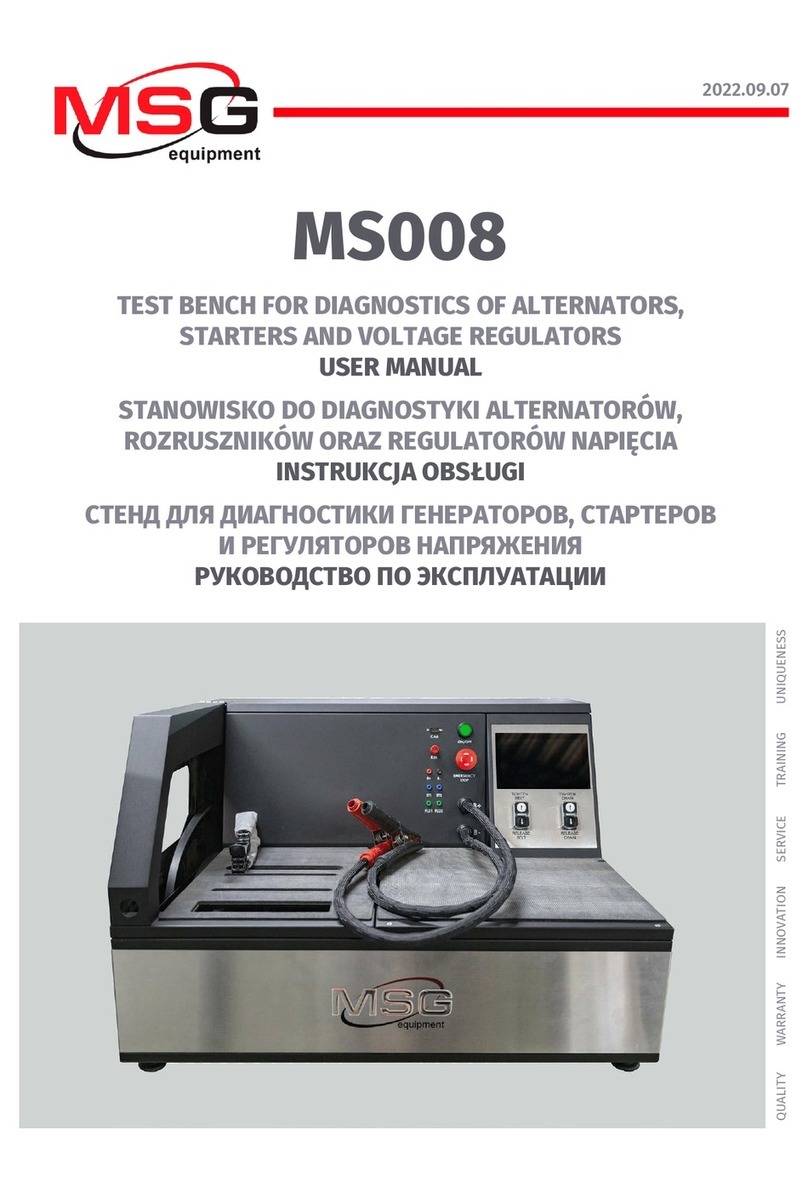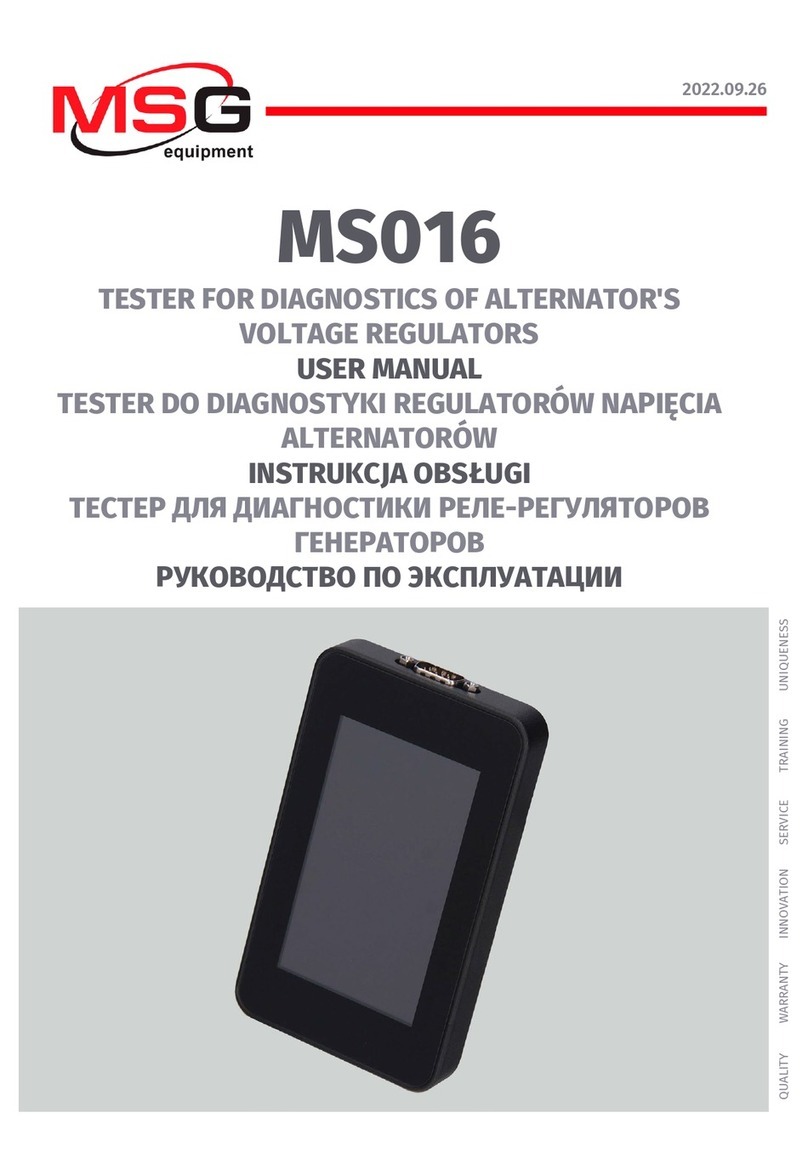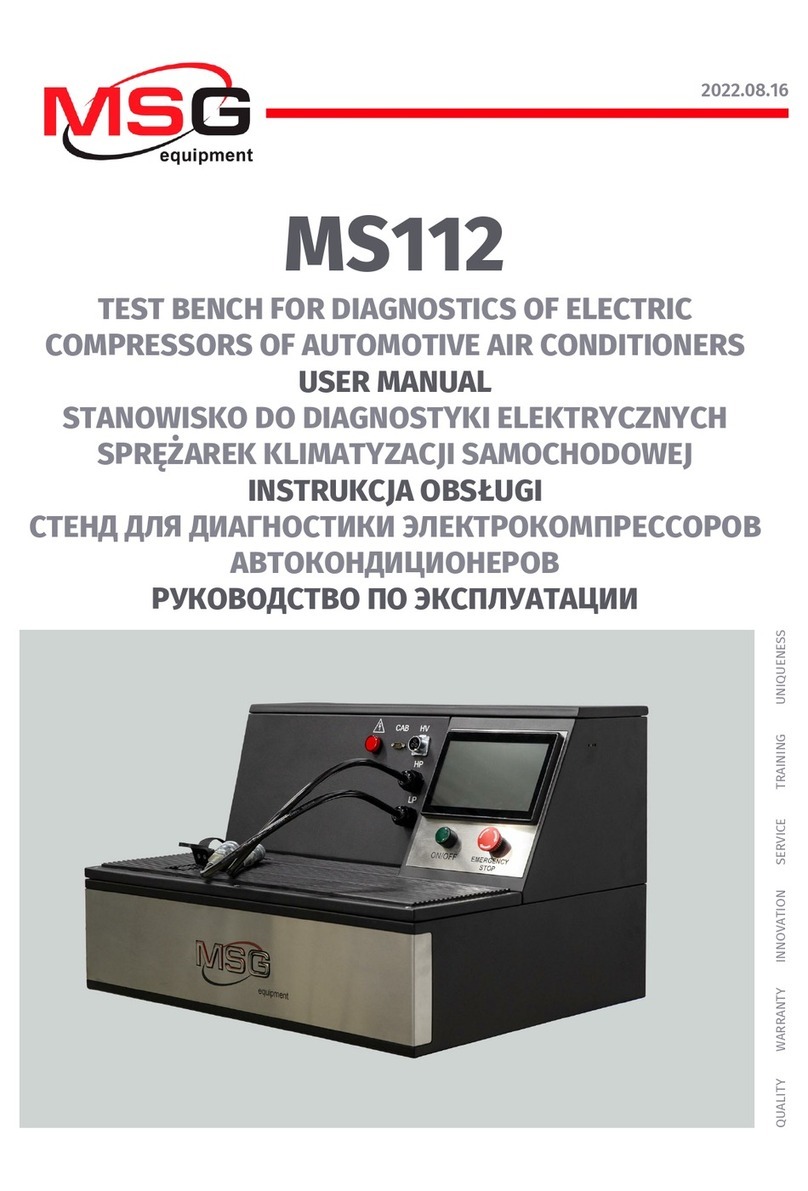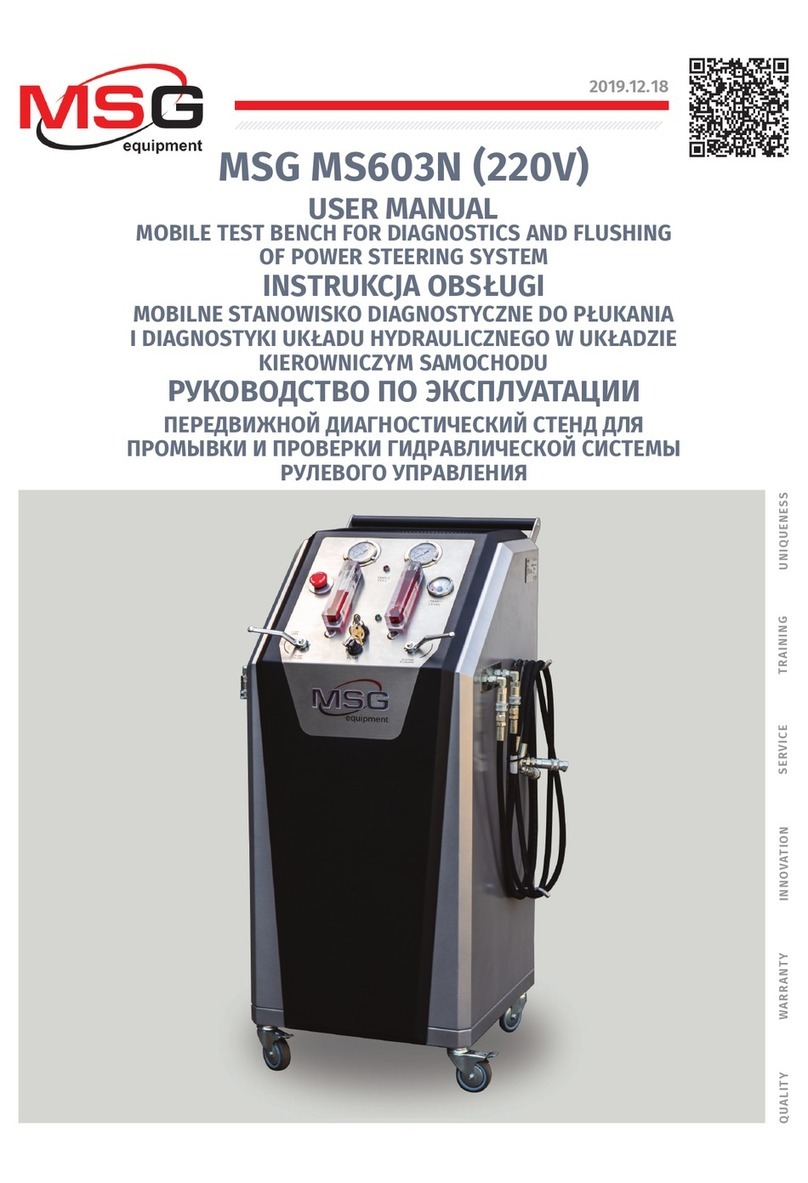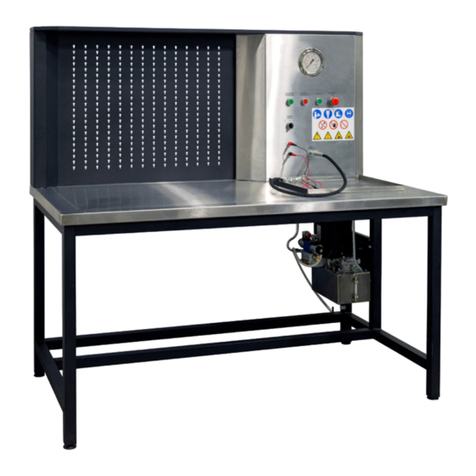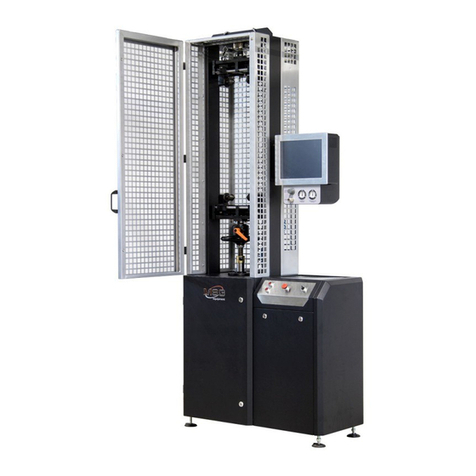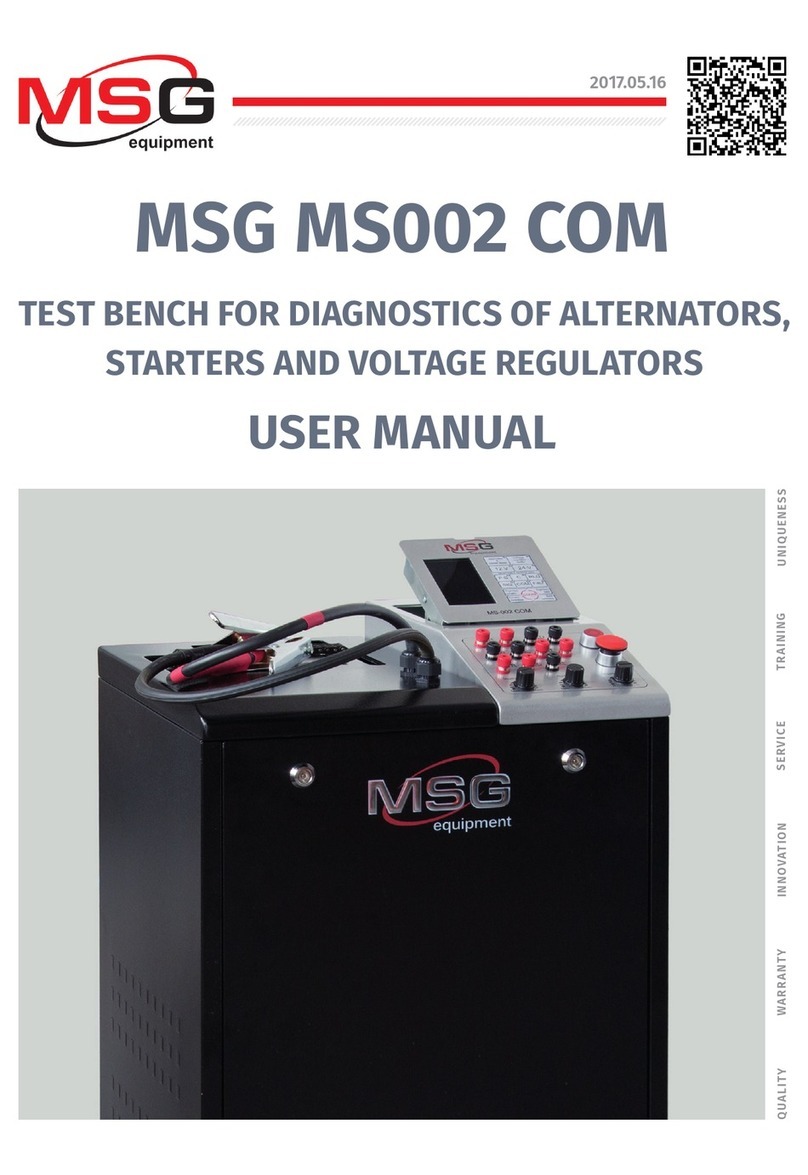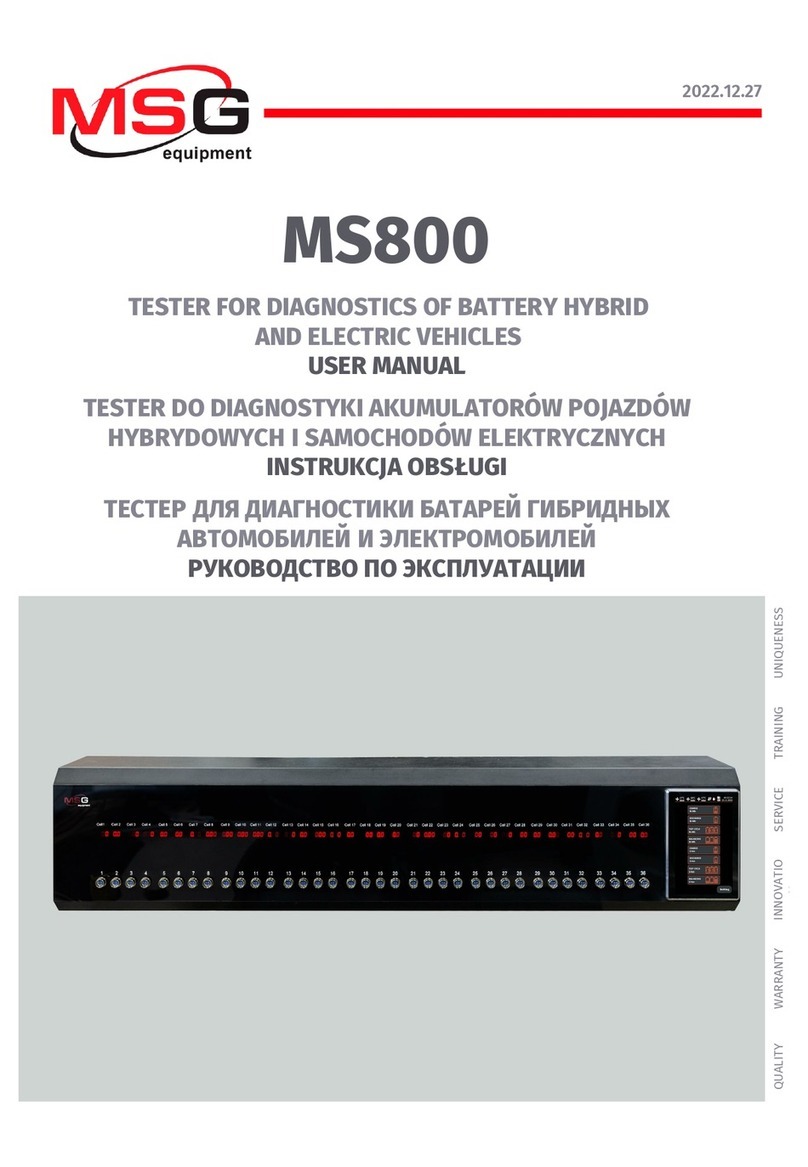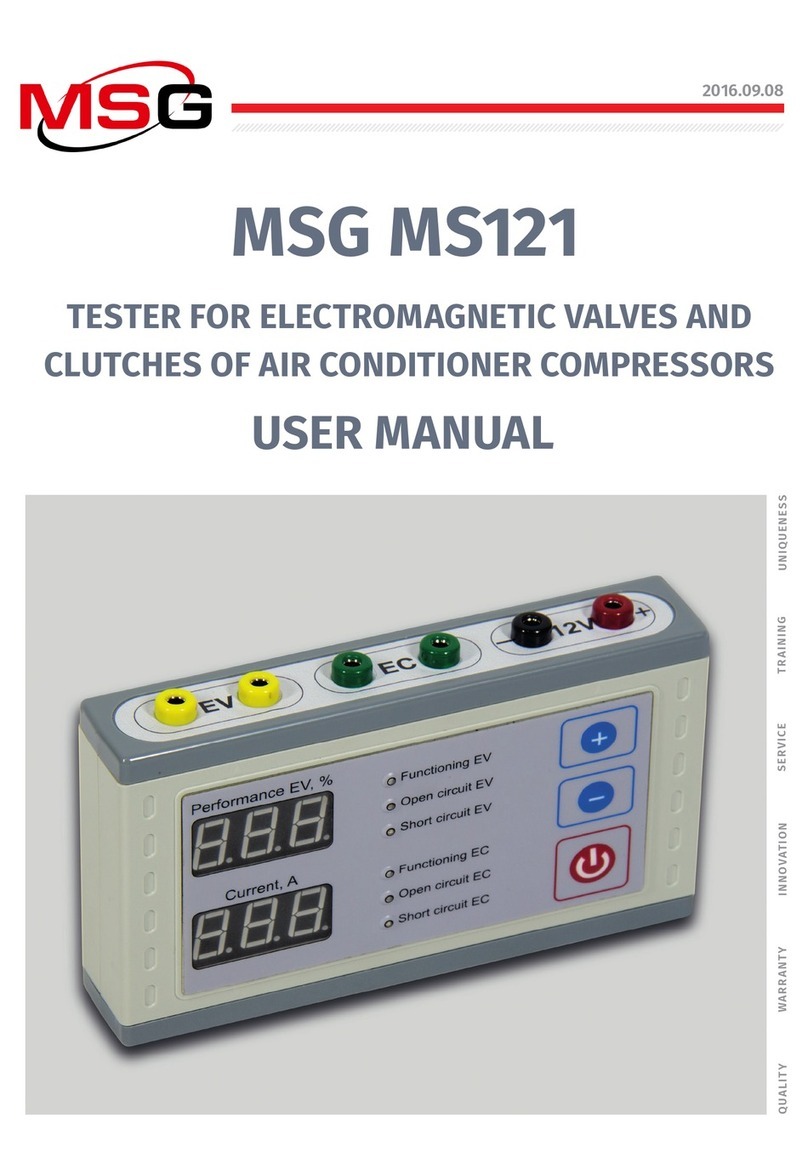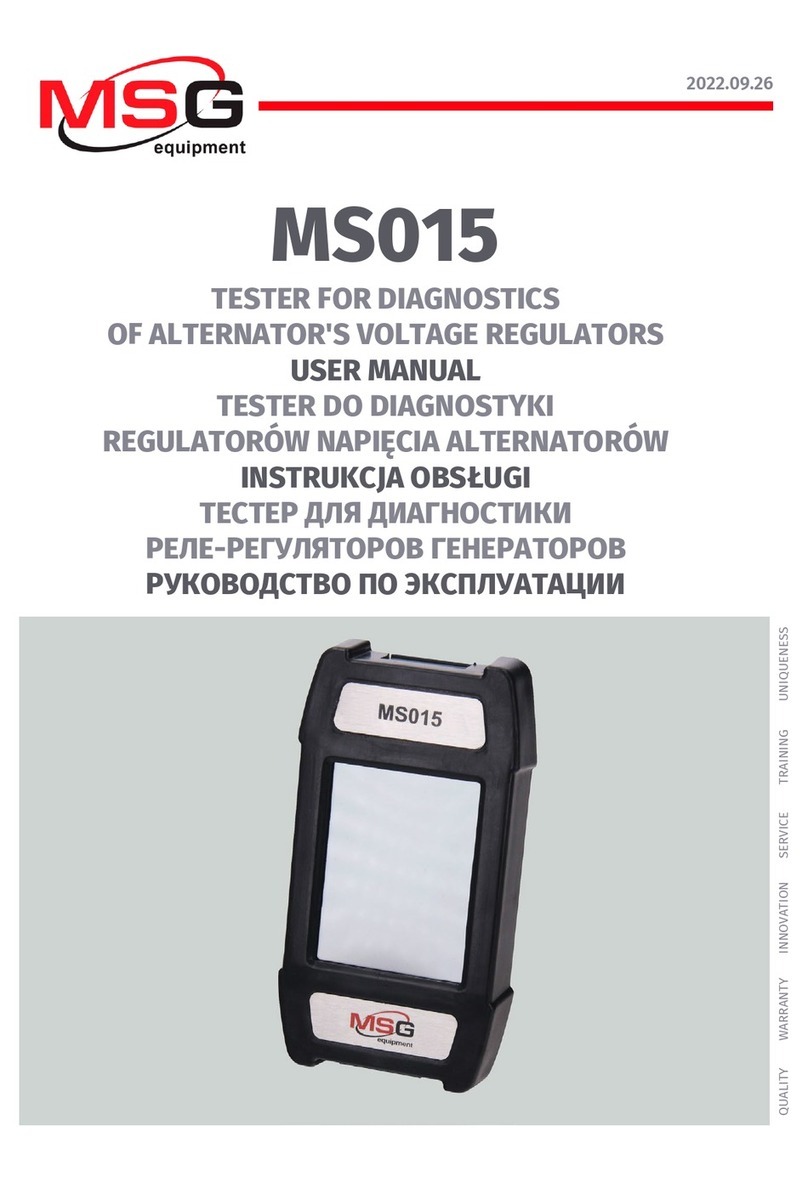
User Manual - Test bench MSG MS1000+
2
INTRODUCTION..........................................................................................................................................................3
1. SAFETY MEASURES.............................................................................................................................................3
2. DESCRIPTION AND OPERATION.......................................................................................................................5
2.1 Test bench description and operation ...............................................................................................6
2.1.1 Technical characteristics................................................................................................................6
2.1.2 Packing and equipment set..........................................................................................................7
2.1.3 Installation location.......................................................................................................................7
2.1.4 Test bench construction and operation...................................................................................7
2.2 Test bench component parts description and operation.............................................................8
2.2.1 General information and working chamber operation ......................................................8
2.2.2 Pneumatic clamp adjustment.....................................................................................................9
2.2.3 Lower pneumatic clamp height adjustment..........................................................................10
2.2.4 Puller stroke adjustment .............................................................................................................11
2.2.5 Shock absorber nitrogen filling block......................................................................................12
2.2.6 Control panel...................................................................................................................................12
2.2.7 Pneumatic clamp pedal control unit........................................................................................13
3. PROPER USE.........................................................................................................................................................13
3.1 Operating restrictions..............................................................................................................................13
3.2 Test bench preparation for use.............................................................................................................13
3.3 Test bench use............................................................................................................................................14
4. TEST BENCH MAINTENANCE.............................................................................................................................19
4.1 Invertor maintenance...............................................................................................................................19
4.2 Gear motor maintenance ........................................................................................................................20
4.3 Air-preparation unit maintenance .......................................................................................................23
5. TEST BENCH RUNNING REPAIR........................................................................................................................24
6. STORAGE...............................................................................................................................................................25
7. TRANSPORTATION...............................................................................................................................................27
8. TEST BENCH WASTE............................................................................................................................................27
9. TEST CERTIFICATE ..............................................................................................................................................27
CONTENTS

